I don’t like raw onions in any dish. I’ll spend fifteen minutes picking them out, letting the rest of my meal grow cold or stale, just so I don’t have to eat them.
I know many people love them, and chefs insist that some dishes, like guacamole or salads, must have them in order for all the flavors to come together in an almost mathematic equation of taste (and there are chefs that cook using a equations).
In fact, I’d say most people do like raw onions; gourmets, gourmands, chefs, critics, all believe that raw onions taste good.
You could say maybe it’s a consensus, even. People like the taste.
Not me. Raw onions are not to my taste, and that’s fine by me.
I’ll cook my food how I wish, I’ll ask the chef for no onions, and, if he wants to get paid, he’ll comply or kick me out of his special little restaurant.
And I’ll be happy to leave. You don’t want me, I’m not there.
Ain’t no body got time for that.
Taste is totally subjective, no matter how many people think it’s a quantifiable fact.
I’ve even read a book, some weird thing about Zen and motorcycles, which the story is about, but, really it’s a treatise on a thing the author calls Quality. The principle of quality. The whole book reminded me of my final thesis in my Psychology in Literature class, senior year (which I got an A+ on by the way). It was a thesis on the whole “I think, therefore I am” and how I could, using words and solipsism, transform the phrase into a consciousness centered universe. I had fun writing it and it made sense, within the logical framework I had constructed.
Wait, what was I talking about?
WARNING! Opinion, anecdote, and editorializing will now follow…..
There once was this Facebook bonsai page that I was a “charter” member of (point to consider, I don’t “join” Facebook pages, I tend to be added to them. As was the case here).
I stuck around for a while on this page, not posting anything, and not really commenting unless someone took my name in vain…read: tag me….it really wasn’t my kind of page. The concept of the page was an exclusionary one. The name really said it all.
And it was a closed, private, group, of course. So that those people who were, well…..ridiculed is the correct word, didn’t know about it. You know what happens on those pages after awhile. They start out with all kinds of idealism and promises of objectivity and effusive ejaculations of “kumbayah” but end up being populated with bitter “constant intermediates” who’s only joy in life is to try to tear down anyone who has a different, or interesting, thought in their head.
Anyway, to make the long story short, I left the group and went about my business of standing up for beginners and independent thinkers, in other groups, and in this blog.
The bonsai world of hobbyists and enthusiasts is a very conservative and, dare I say it, a place where hazing is the norm.
Here’s a tree, a plant. Not a bonsai though. Remember that.

It’s in a Roy Minarai pot, one I got early in his career so it was pretty cheap when I got it.
The tree, a willow leaf ficus, was the companion plant to this Hornbeam in one of the Winter Silhouette shows in Kannapolis.
The only reason I used it was because it was, and still is, a highly directional plant. Point to consider, in a display, the companion plant should lean towards the main bonsai in the composition.
Here’s a professional photo of the Hornbeam, taken by one of the best bonsai photographers out there, Joe Noga:
Sitting next to the Hornbeam, and being a tree that’s used as bonsai, that ficus puzzled, and bugged a bunch of people because it wasn’t “styled”, or in any tree shape (remember, not a bonsai. It looked like a type of grass to me, and that’s why I used it. Grasses are a very good companion plant, in case you get stuck trying to figure out a good plant to use for an exhibit, go dig up some pampas or sedum and stick it in a pot).
It bugged so many people that it spilled over onto the internet and “they” decided to critique my whole display on that aforementioned closed Facebook group. At this point, I was no longer a member, I got sick of the vitriol, and the admins threatened to remove and ban anyone who told me that the character assassination was taking place. Character assassination?
Yeah, because once they ran out things to say about the tree not even being styled, they started in on me and my dislike of onions.
And the ficus wasn’t even a bonsai. Ain’t that the kicker? I had a good laugh at it all (as you can probably figure out, several people told me about the FB thread and, yes, they got kicked out for that transgression. Kumbayah my love).
Being the contrarian cuss that I am, I have still not styled the tree into a bonsai.

Nor shall I today. But, as with all ficus, it needs to be repotted often, so that’s what I’m going to do now.
I’ll cut it back a little too. If I ever show in an exhibit again, it just may end up in my display.
Here’s Roy’s stamp, an otter.
In pottery, my taste runs to interesting glazes with serendipitous effects and reactions during firings. I like drips, spaces, even chips and cracks.
I love the pot, it’s unique and not easy to replicate.
And it’s not cookie cutter. Roy has done well in taking classic bonsai pot forms and hanging his unique glazing skills on them.
Anyway, here’s the tree now, ficus salicaria, a “root cutting”, meaning I chopped the root off of a larger tree and stuck it into a pot. The F. salicaria roots will shoot new branches at the top, cut end of the root (the idea is to keep as many roots below as possible. It’s not a cutting in the normal sense of the technique, but until I hear, from a botanist, what it’s called, I’ll use the term “root cutting”).

The plant is multidirectional, meaning I can use it facing one way or the other.
Though I tend to like it facing to the left.
I’m going to remove a few branches, just to simplify it a little.
Yup, needs repotting.
Kinda funky. The “dirt” you see was probably from the moss I put on it for that show. You collect moss around the house (near AC condenser units is a good place to look. Especially behind supermarkets).

The moss ultimately has dirt on the bottom and it gets washed through your mix.
One reason I don’t like moss on a tree.
Some hose action, and we have clean roots.
Kinda looks like it’s crossing its legs.
It may end up getting styled one day so, out of habit, I spread out the roots.
Now for the pruning.
Snip.
Snip
I simplify the top. I’m not going for ramification, just directionality.
There we go.
New soil.
I rotated it counter clockwise maybe 15 degrees.
No wire either. Remember, it’s not a bonsai.
Per se.
A bonsai is, by my definition, a relatively small and young plant made to look like a large and old tree, using various aesthetic techniques and horticultural practices.
I think I’ll end this post with a poem. Of my own composition.
We in this fragile life
Trying to find a way in the whim
and turns of the way
but the way is long and twisted,
obscured by mist and light,
making the way hard to walk,
Those who help can’t help because their way may be parallel
but it never intersects.
Not hardly ever.
Who can tell me what that road sign says?
It’s like a dream, first it says First street. Then it’s on Main,
then Broadway, where we can stroll
and twirl our parasols and tip our caps
like mad Victorian geese strutting in the sun.
I twirl my waxed mustache and tip my bowler as though I’ve been trained,
not like today.
Today you’re set free too early,
no thought to freedom or what it implies, except the first half.
True, freedom outs,
but it tells too.
It tells us the way on the way to the way. It’s a tough trail to take
but I hope it doesn’t ruin me in the end.












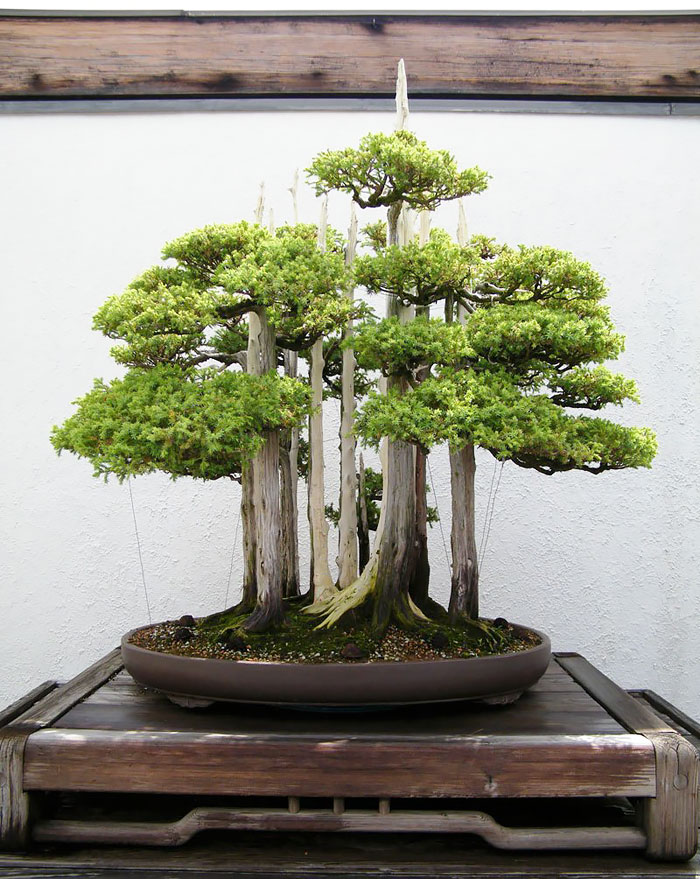
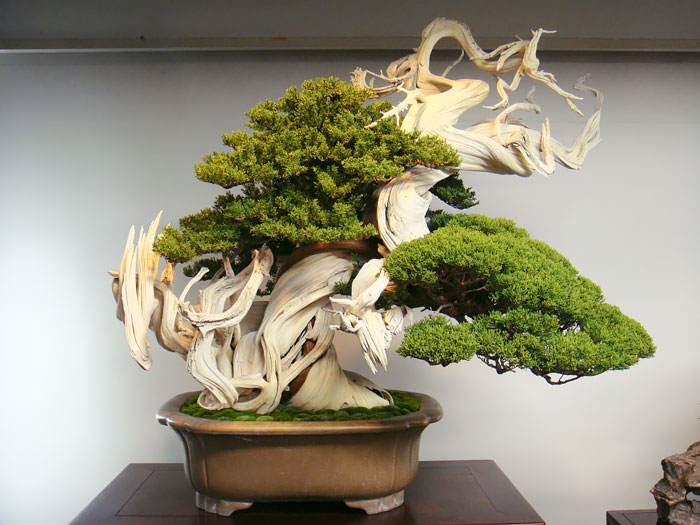




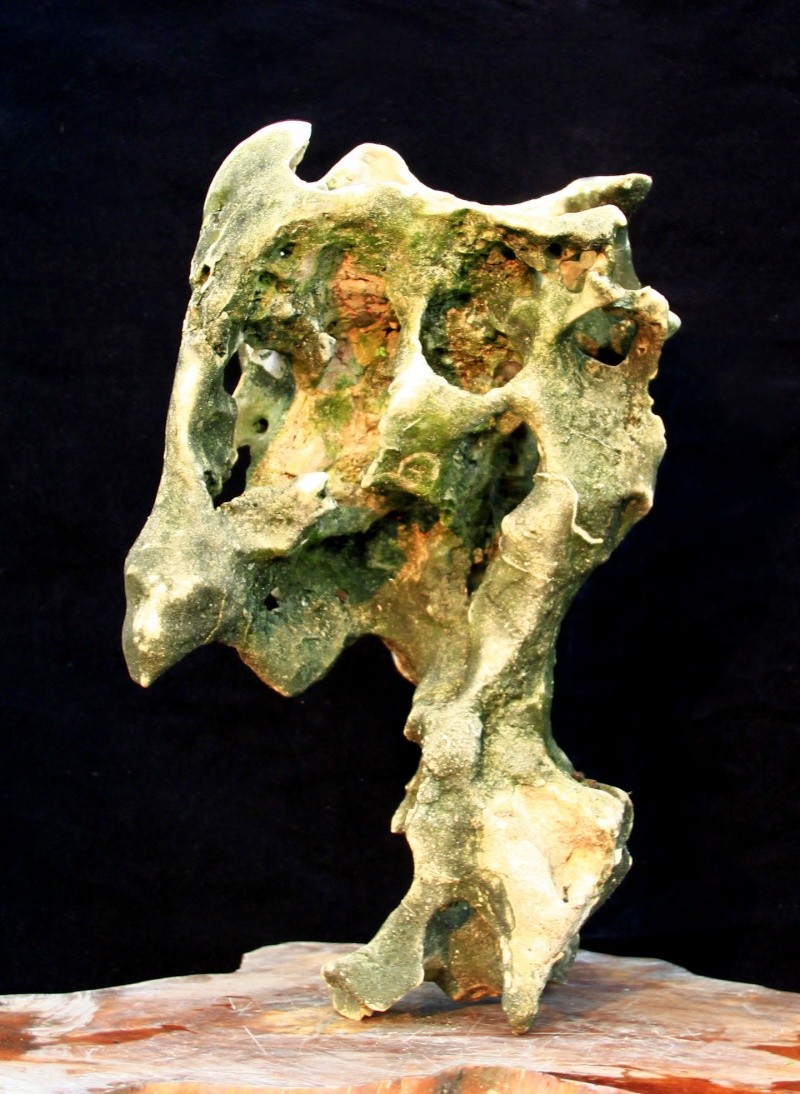
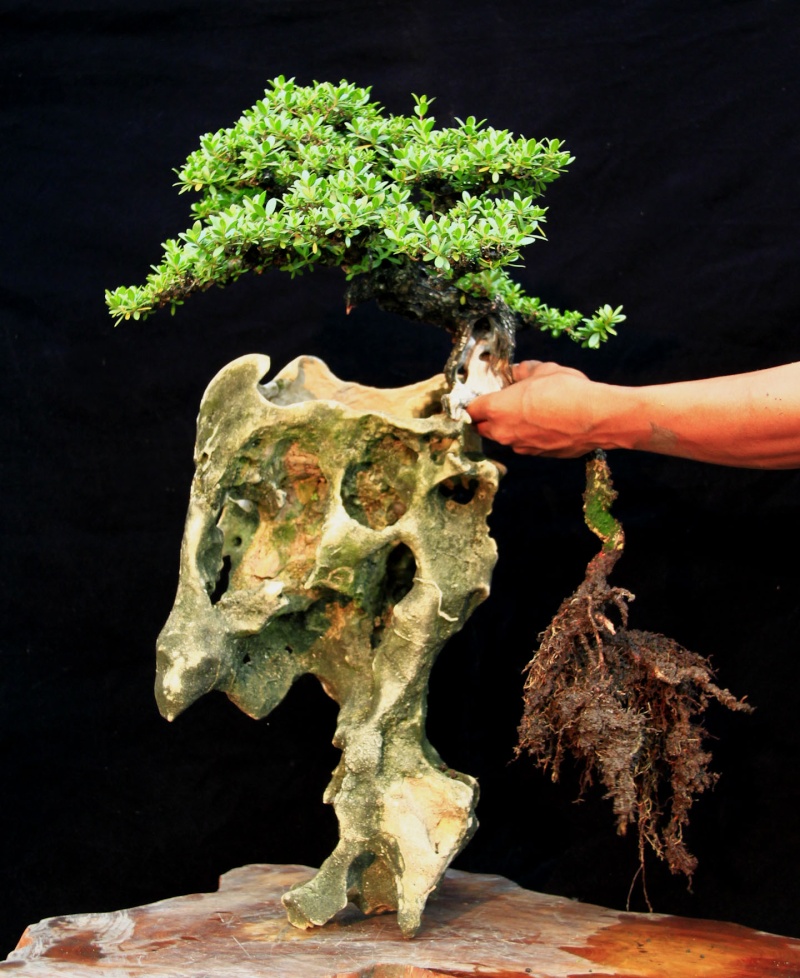

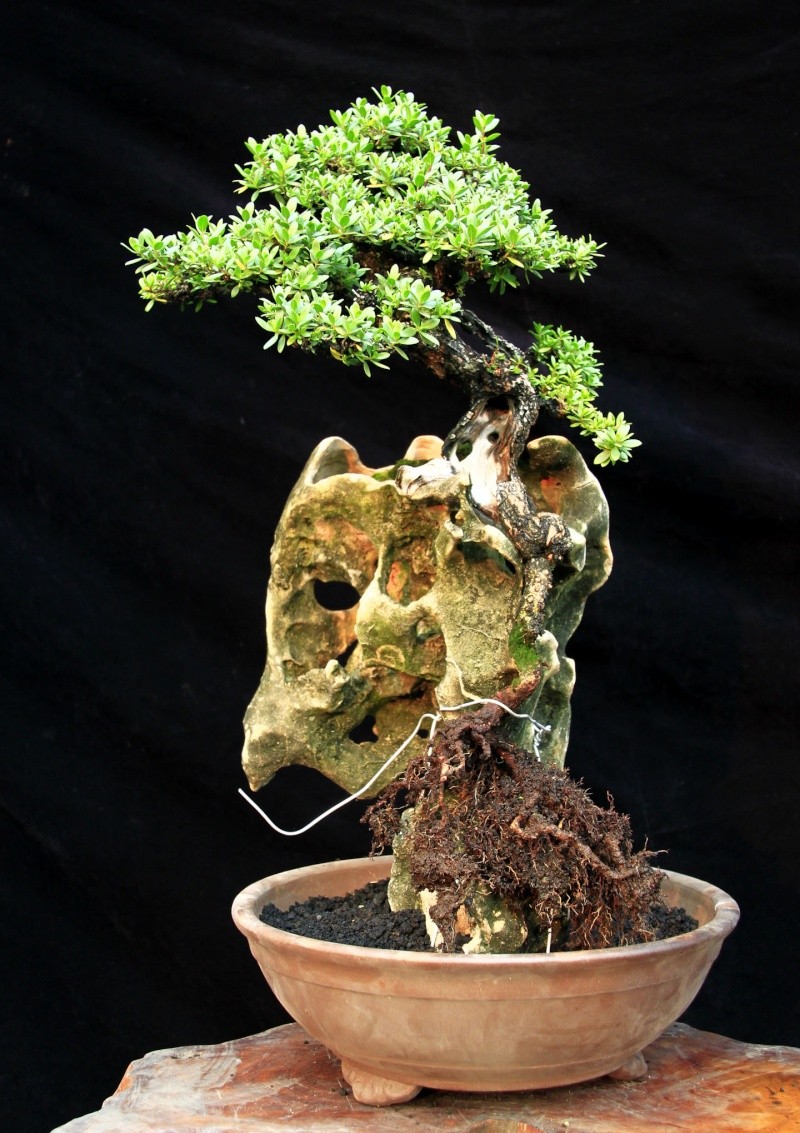
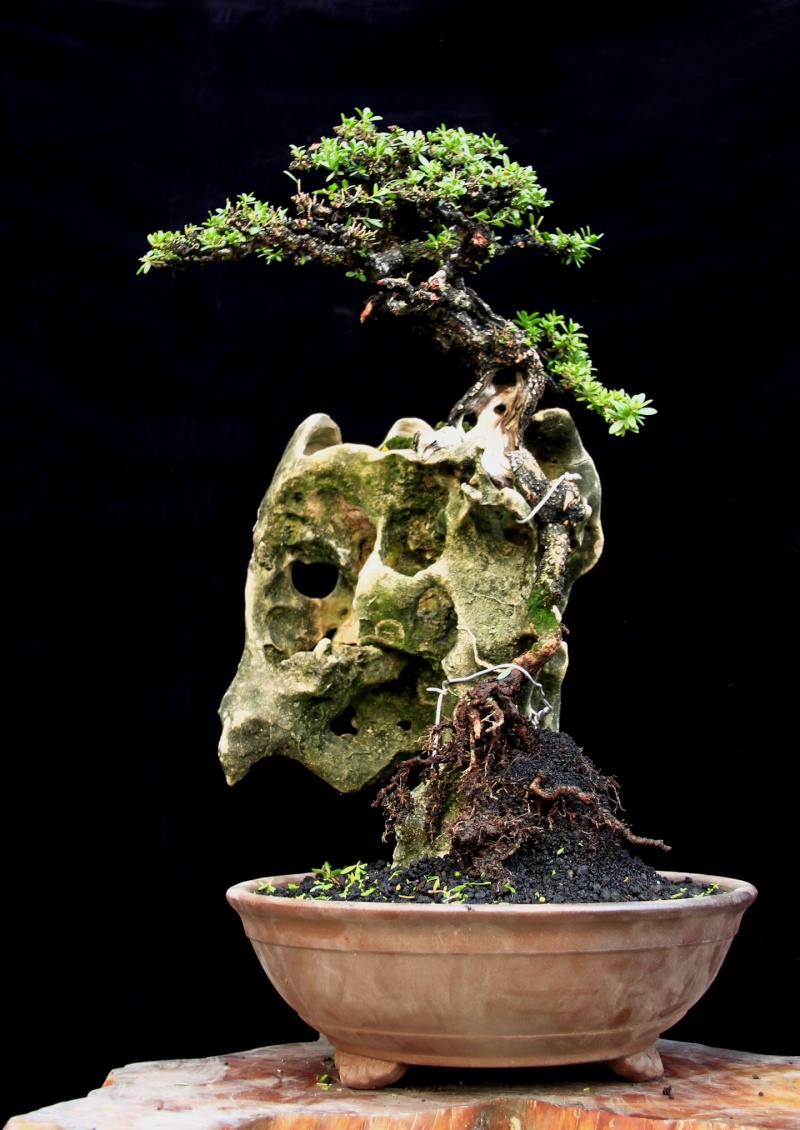


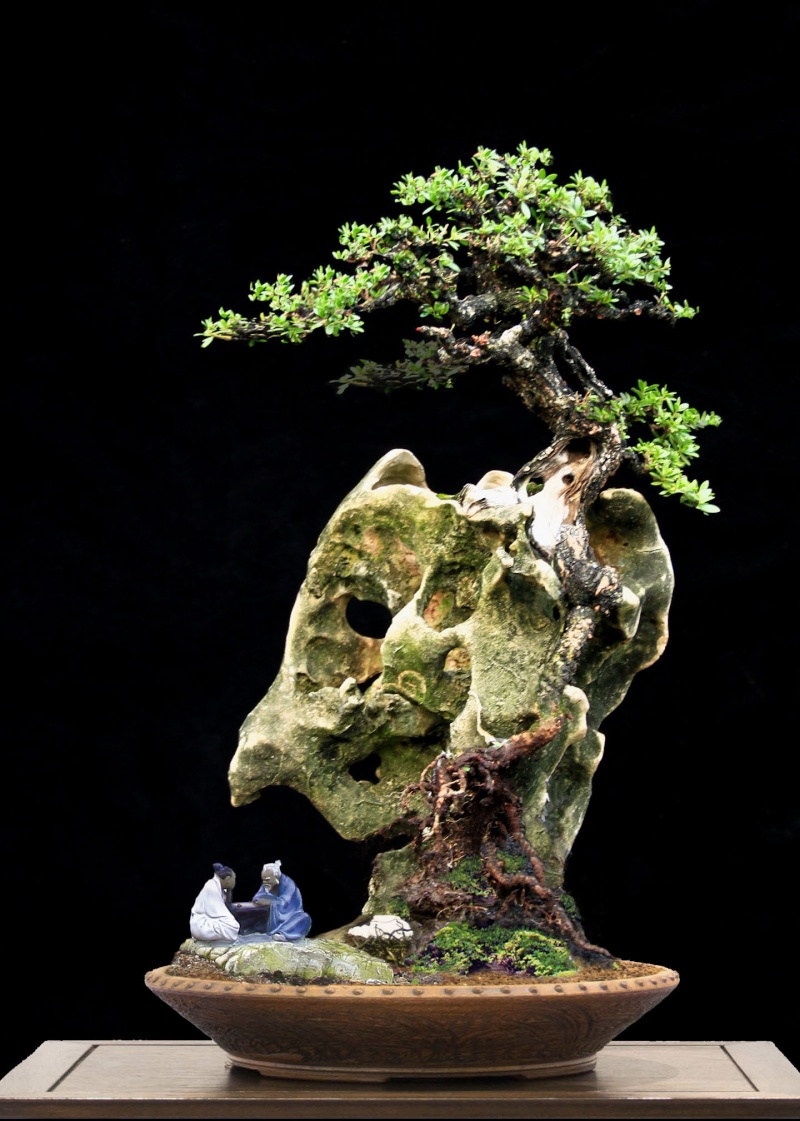




 And that’s Buzz, say “Hi!”
And that’s Buzz, say “Hi!”







 The plant is multidirectional, meaning I can use it facing one way or the other.
The plant is multidirectional, meaning I can use it facing one way or the other.


 The moss ultimately has dirt on the bottom and it gets washed through your mix.
The moss ultimately has dirt on the bottom and it gets washed through your mix.










